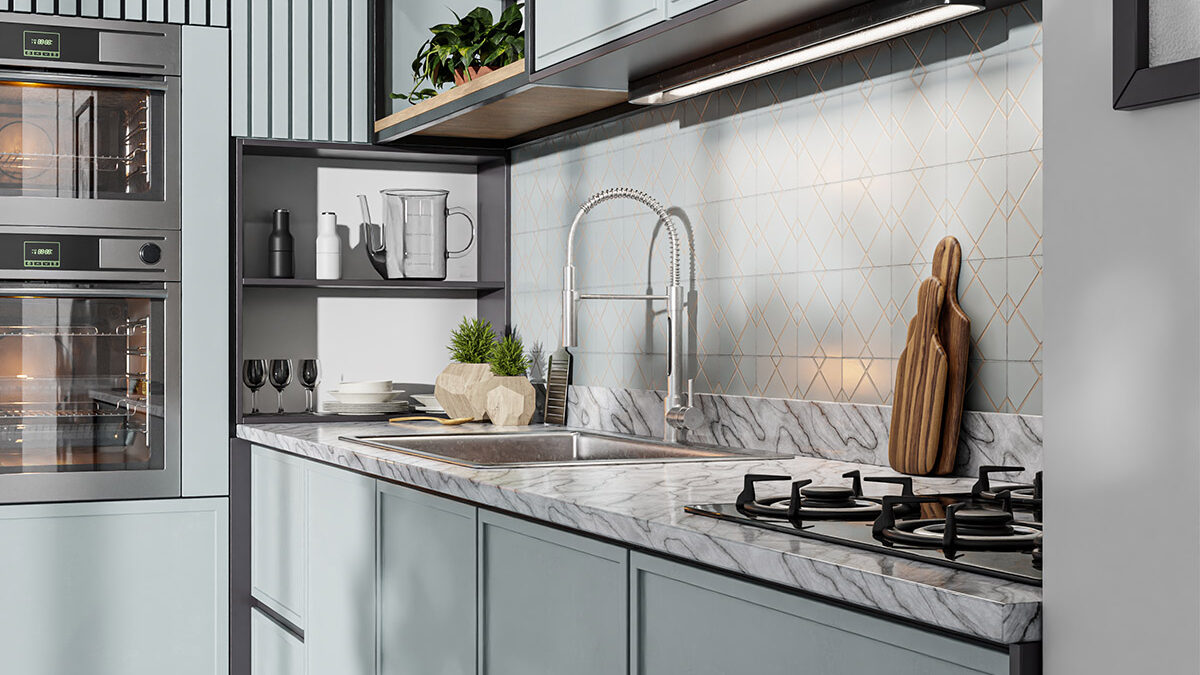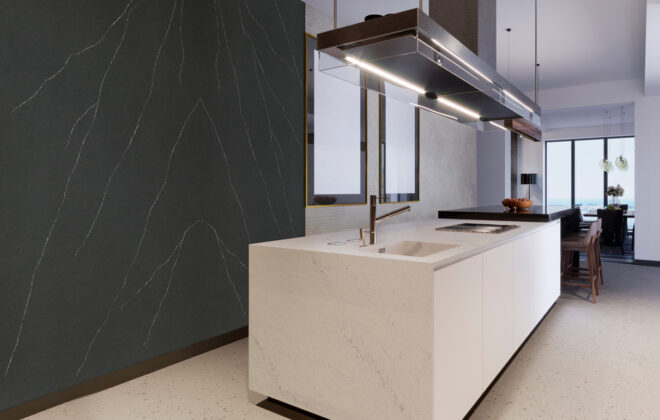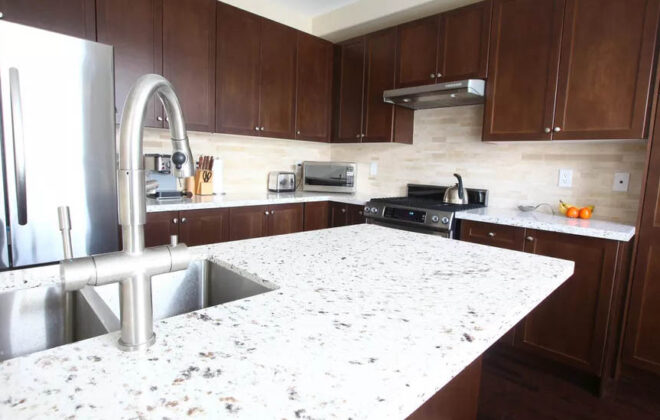How Are Quartz Countertops Made?
 If you’ve ever looked into different kitchen counter-top materials, you may wonder how these natural stone slabs end up becoming the lovely polished countertops that we all know and love.
If you’ve ever looked into different kitchen counter-top materials, you may wonder how these natural stone slabs end up becoming the lovely polished countertops that we all know and love.
While most stone counter-tops are made from natural stone, such as marble counter-tops, quartz is a man-made material. While natural stone counter-tops are literally pieces of stone cut from a giant slab and polished to perfection, quartz counters are made very differently.
So, how are quartz counter-tops made?
How does this engineered stone find its way to our kitchen counters?
In this Kitchen Infinity blog we aim to find out!
The Main Steps to Making a Quartz Counter-top
Although certain stone fabricators may have slightly different ways of doing things, most companies will use the process below to make quartz counter-tops.
1. Raw materials are mixed together
First things first, the raw materials that make up quartz are mixed together in large industrial-sized mixing bowls. Quartz is around 90% ground quartz, a natural mineral found in the earth. After that, the last 10% or so is comprised of various resins, polymers, and pigments. Polyester resins are commonly added too.
Depending on the color and style/look of quartz counter-tops that you desire, certain pigments and stones may be used for the design. Quartz kitchen counter-tops can come in various colors and patterns, all of which can be made to look uniform. In contrast, natural stone kitchen counter-tops have natural veins and colors that can’t be changed.
As the raw ingredients of quartz are mixed together, they start to form a paste-like consistency similar to damp sand. At this point, the ingredients are starting to bond together and the fabricators can move onto the next step in the process.
2. The mix goes into a large mold
The mix of sediment goes into a large mold designed to shape the raw materials into long, flat, rectangular slabs. This is when the quartz will begin to take shape as a slab.
Once the quartz is in the mold, it will be smoothed out to ensure that it is evenly distributed and there are no gaps where air can get in. It’s essential for the quartz slabs to be non porous and airtight, so the mixture must be molded properly.
3. The mold is compressed to form quartz slabs
Once the mold is ready, the materials will be compressed by a large machine in order to form quartz slabs. Essentially, all the tiny pieces of quartz mineral and resin are forced together under immense pressure so that they become one large solid object (a slab of quartz).
Ideally, the slab should be around 1-inch thick.
Special processes are used to make sure that the slab is airtight and non porous. Industrial vacuums suck any air pockets out of the quartz material as the mixture is compressed, essentially “squeezing all the air out” of the mixture.
Additional processes are used at this point to reduce air pockets in the surface of this engineered stone – vibrations help to shake out any loose stone and really solidify the construction.
Basically, all of this effort goes toward making the quartz slab as solid and air-tight as possible!
4. The quartz slabs are dried and heated
Once all of that compression is done, the quartz is dried and then “baked” in hot machines that use heat and pressure to fully solidify the quartz and ensure that the surface is smooth.
It’s important that bacteria doesn’t have any pockets of air to hide in and liquids don’t have any little pores to seep into when you’re using the quartz for counter-tops.
Because quartz is a man-made stone, extra effort can be put into making the surface as practical as possible for kitchen usage.
5. Finishing touches are made
After the slabs are dried and heated, the quartz is basically ready for the finishing touches. Usually this involves large machines polishing the slabs until they are perfectly shiny. After the polishing process, a stone fabricator may inspect the slab and do some hand-polishing if necessary.
Now the slab is ready to be cut to size for your home. A technician will visit your home to get exact measurements for your new kitchen counter-tops. These measurements are sent to the factory floor, where the experienced fabricators use special tools to cut the quartz counter-tops to the correct size.
The cutting process is very precise – fabricators must account for things like sink basins and the various different styles of counter-top edges that home owner might desire. Once the quartz has been cut to its final shape, it will usually be hand-polished and inspected a final time before it is finished.
Then it makes its way to your home to give your kitchen a fresh new look!




